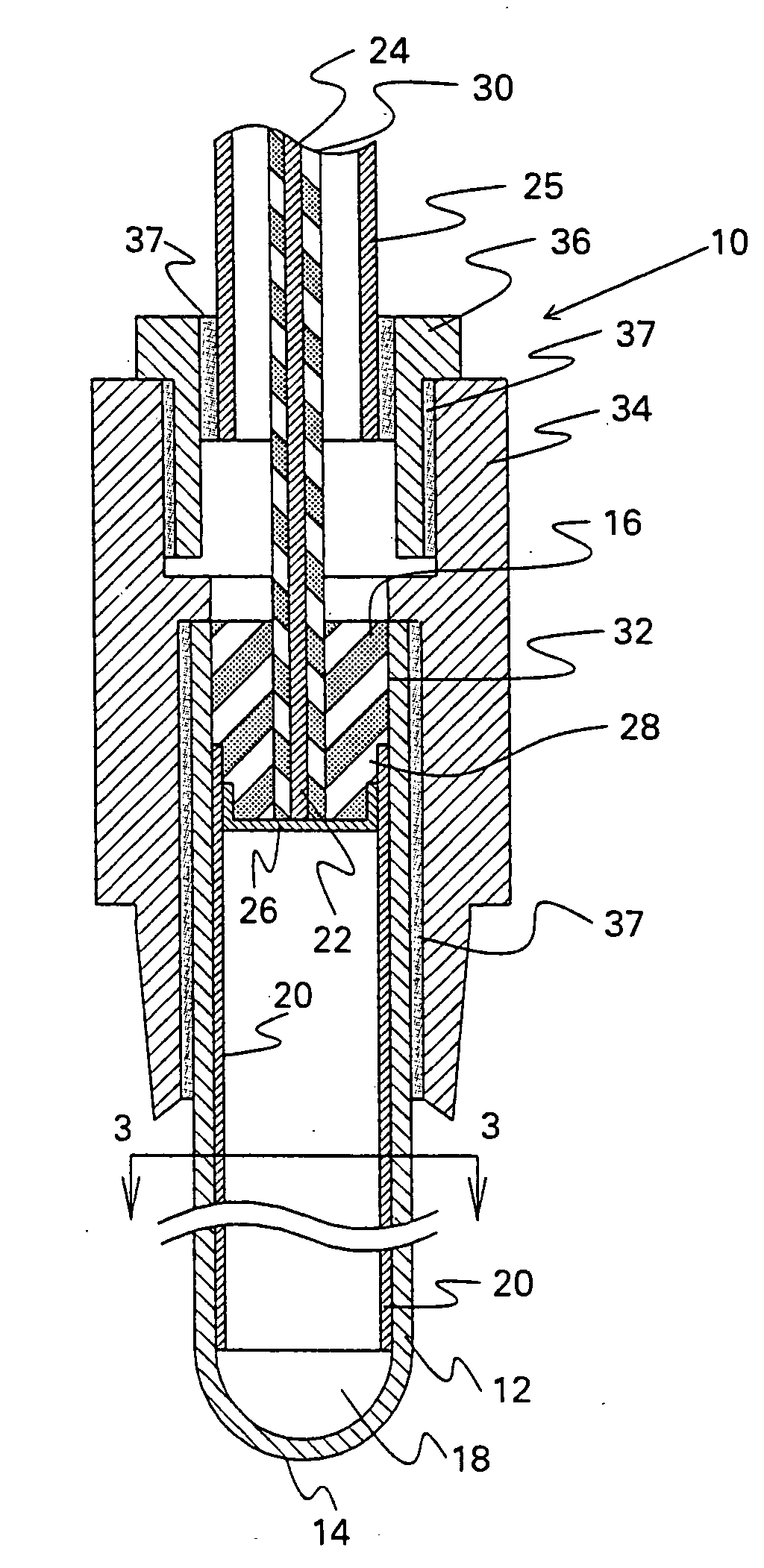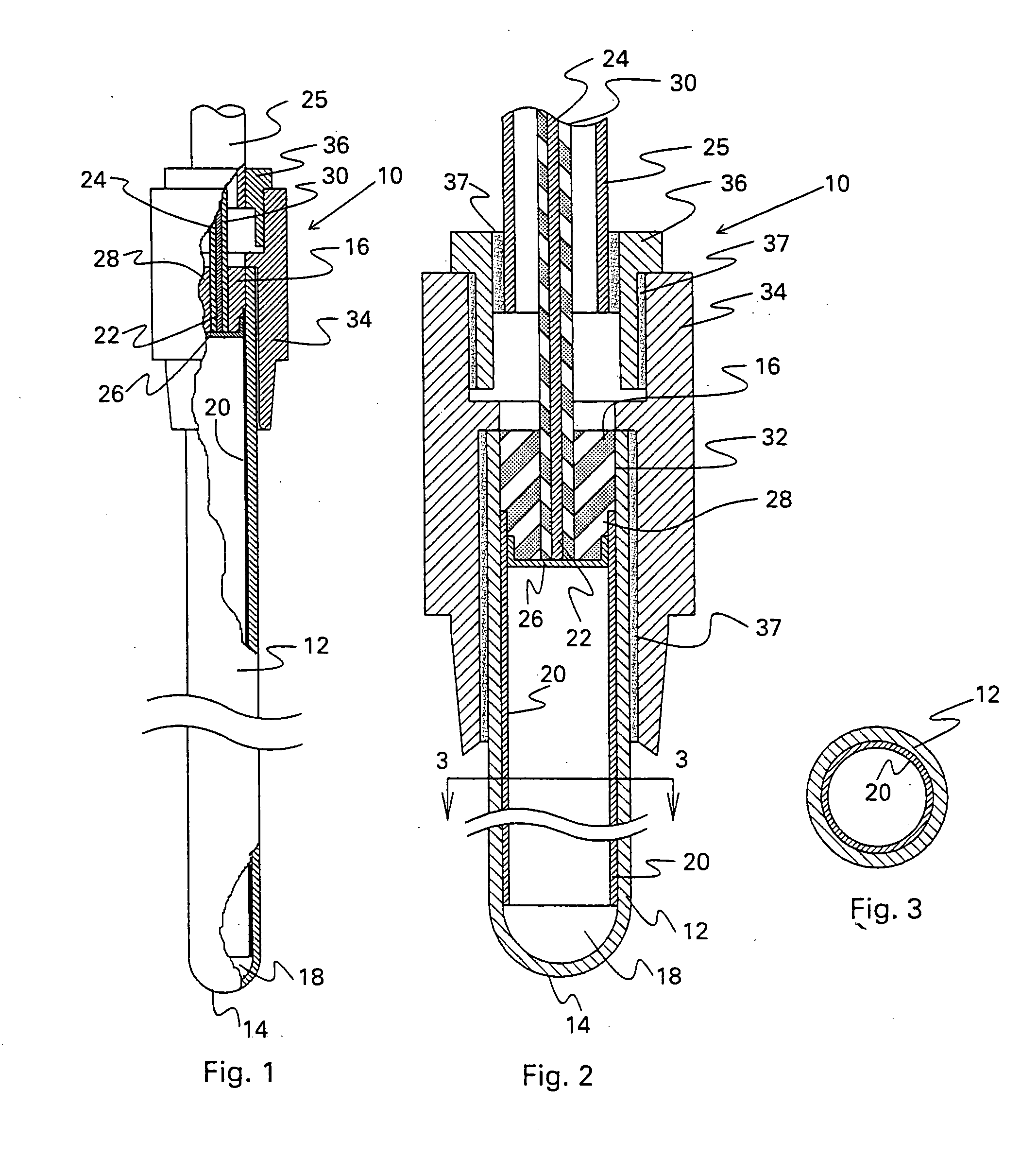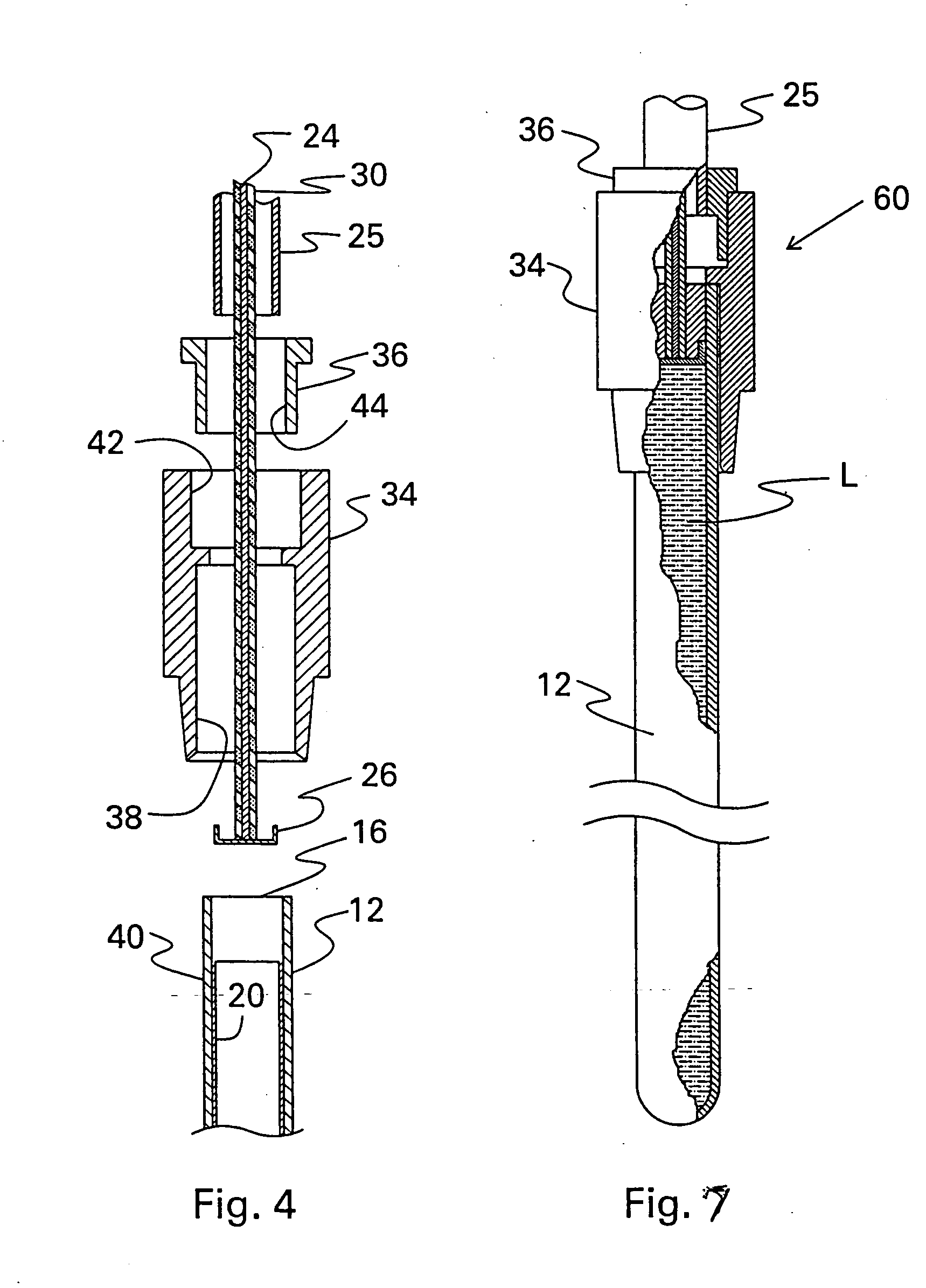Capacitive electrostatic process for inhibiting the formation of biofilm deposits in membrane-separation systems
- Summary
- Abstract
- Description
- Claims
- Application Information
AI Technical Summary
Benefits of technology
Problems solved by technology
Method used
Image
Examples
example 1
[0063] An 18-inch ceramic electrode configured according to the device 10 and a 30 kV DC power supply were installed in the pump suction of a reverse osmosis unit at a soft drink bottling plant. The object of the installation was to study the effect of the high-voltage capacitive electrostatic field created by the device 10 on RO membranes as a means for maintaining the membranes free of biological deposits. The reverse osmosis unit in the test was an Osmonics Model OSMO 43CHF-PR216KY / DLX, having a permeate rate at 25° C. of about 450 liters per minute and a concentrate rate of about 135 liters per minute, with primary and final maximum and minimum pressures of 400 psi and 250 psi, respectively. The Osmonics unit consisted of a 3-2 series array configuration (as illustrated in FIG. 9) with each vessel housing five Filmtec membranes Model Number BW30-330. Feed water was taken from city water with about 300 ppm in total dissolved solids. Pretreatment for the water involved sand filtra...
example 2
[0067] The capacitive electrostatic device of the invention was utilized to determine whether improvements could be obtained in a system for producing high purity water in a microelectronics plant that included two independent RO units in series. The system used an initial 2-1-1 array configuration, wherein the permeate of the first unit became the feed to a second unit having a 2-1 array, both units being equipped with Hydranautics Model 8040-LHY-CPA2 membranes. Prior to use of the electrostatic device, maintenance personnel cleaned the membranes approximately every two to three weeks. The membranes were cleaned again at the time of installation of the electrostatic device. As a part of normal feed pretreatment, a chemical dispersant was being added to the feed stream of the first RO unit. This dispersant feed was reduced by 50% after the test began.
[0068] Three weeks after the test started at about 35,000 volts DC, one vessel from each unit was opened for inspection. When the mem...
example 3
[0071] This test was conducted at a grain refinery where a permeate product for process water makeup was being produced by two independent and identical reverse-osmosis systems with a 5-3-1 configuration operating in parallel. The two RO systems shared the same water source and pretreatment system. The pretreatment consisted of a peroxide / air process to oxidize high contents of hydrogen sulfide in the water, followed by a catalytic carbon bed to remove residual sulfides, and bag filters for final polishing. The first RO unit had new membranes installed prior to the test while the second RO unit continued to operate with fouled membranes.
[0072] Fouled membranes on both units had been usually replaced every three months with clean modules, and the fouled modules were being sent out to the manufacturer for cleaning. The high voltage power supply and the electrostatic capacitor of the invention were installed and placed in operation for 27 days at 30,000 volts DC. On the sixth day of o...
PUM
| Property | Measurement | Unit |
|---|---|---|
| Electric potential / voltage | aaaaa | aaaaa |
| Electric potential / voltage | aaaaa | aaaaa |
Abstract
Description
Claims
Application Information
 Login to View More
Login to View More - R&D
- Intellectual Property
- Life Sciences
- Materials
- Tech Scout
- Unparalleled Data Quality
- Higher Quality Content
- 60% Fewer Hallucinations
Browse by: Latest US Patents, China's latest patents, Technical Efficacy Thesaurus, Application Domain, Technology Topic, Popular Technical Reports.
© 2025 PatSnap. All rights reserved.Legal|Privacy policy|Modern Slavery Act Transparency Statement|Sitemap|About US| Contact US: help@patsnap.com



